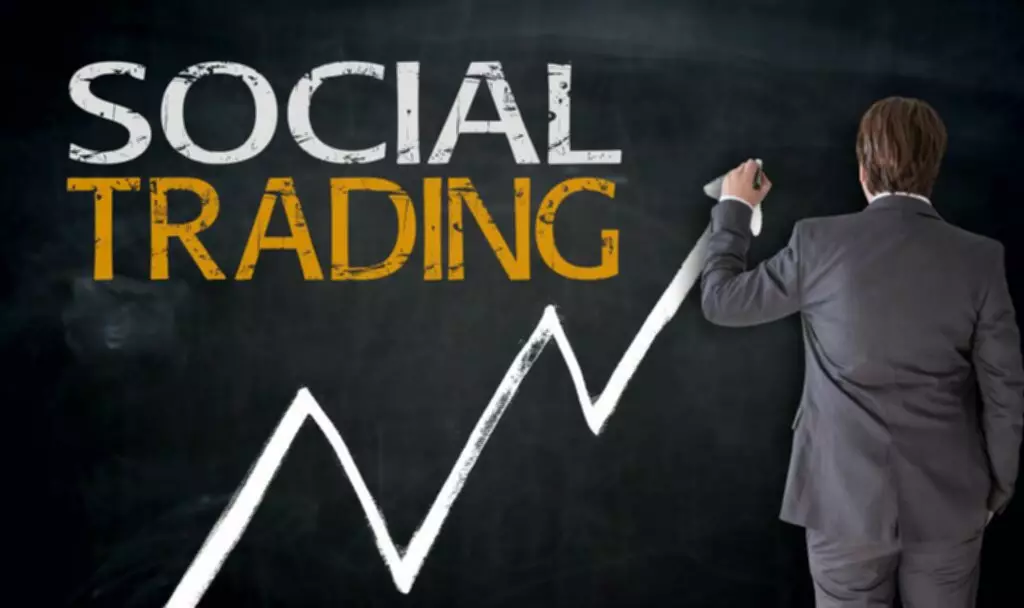Content
We’ve maintained this reputation for over four decades by demystifying the financial decision-making process and giving people confidence in which actions to take next. A sector fund is a fund that invests solely in businesses that operate in a particular industry or sector of the economy. Active investing has become more popular than it has in several years, particularly during market upheavals. An index fund may have less flexibility than a non-index fund to react to price declines in the securities in the index. Sign up to receive our educational newsletter and to gain exclusive access to our next investment opportunity. You don’t mind underperforming, especially in any given year, for the pursuit of investing mastery or even just enjoyment.

Hundreds of other indexes exist, and each industry and sub-industry has an index comprised of the stocks in it. An index fund – either as an exchange-traded fund or a mutual fund – can be a quick way to buy the industry. While active trading may look simple – it seems easy to identify an undervalued stock on a chart, for example – day traders are among the most consistent losers. It’s not surprising, when they have to face off against the high-powered and high-speed computerized trading algorithms that dominate the market today.
So the fund companies don’t pay for expensive analysts and portfolio managers. All this evidence that passive beats active investing may be oversimplifying something much more complex, however, because active and passive strategies are just two sides of the same coin. Both exist for a reason, and many pros blend these strategies. Active investing requires confidence that whoever is managing the portfolio will know exactly the right time to buy or sell. Successful active investment management requires being right more often than wrong. Passive real estate investing, as its name would imply, is a way of generating passive income through real estate.
Advantages Of Passive Investing
But this compensation does not influence the information we publish, or the reviews that you see on this site. We do not include the universe of companies or financial offers that may be available to you. Celebrity Endorsements Read our Investor Alert to learn why a celebrity endorsement does not mean that an investment is legitimate or that it is appropriate for all investors. Some index funds https://xcritical.com/ may also use derivatives to help achieve their investment objective. As a rule of thumb, says Siegel, a manager must produce 10 years of market-beating performance to make a convincing case for skill over luck. That’s one of the issues explored in Investment Strategies and Portfolio Management, which also covers topics such as fund evaluation and selecting appropriate performance benchmarks.
If you’re skilled, you can find higher returns by researching and investing in undervalued stocks than you can by buying just a cross-section of the market using an index fund. But success requires having an expert knowledge of the market, which may take years to develop. Here’s why passive investing trumps active investing and one hidden factor that keeps passive investors winning.
Successful passive investors keep their eye on the prize and ignore short-term setbacks—even sharp downturns. Whenever there’s a discussion about active or passive investing, it can pretty quickly turn into a heated debate because investors and wealth managers tend to strongly favor one strategy over the other. While passive investing is more popular among investors, there are arguments to be made for the benefits of active investing, as well. You might have time to manage one or two rental units, but as a busy professional with a job to do or a business to run, can you realistically manage more than that? If not, passive real estate investing may be a better way to create both scale and sustained wealth through real estate. And therein lies the difference between active and passive real estate investing – a distinction that many people overlook when investing in their first rental properties.
While ETFs have staked out a space for being low-cost index trackers, many ETFs are actively managed and follow a variety of strategies. Historically, passive investments have earned more money than active investments. Although both styles of investing are beneficial, passive investments have garnered more investment flows than active investments. Kirsten Rohrs Schmitt is an accomplished professional editor, writer, proofreader, and fact-checker. She has expertise in finance, investing, real estate, and world history.
Active real estate investing tends to carry more substantial risk than passive real estate investing. If something goes wrong, you won’t be solely responsible for identifying and funding a resolution. You can invest in a real estate investment trust , which is like a mutual fund.
Interested In Investing In Self Storage Fund Iii?
Investors often find an off-market deal, purchase the property at a discount, and then turn around and sell immediately for a profit. Finding properties to flip is the biggest challenge, and is incredibly time intensive, particularly for someone wo doesn’t have much real estate experience or lacks local connections. Passive real estate investing occurs when an investor puts capital into an investment such as self-storage but has a third-party who does the majority of the work. Wharton finance professor Jeremy Siegel is a strong believer in passive investing, but he recognizes that high-net-worth investors do have access to advisers with stronger track records. One of the most popular indexes is the Standard & Poor’s 500, a collection of hundreds of America’s top companies. Other well-known indexes include the Dow Jones Industrial Average and the Nasdaq 100.
If you invest in index funds, you don’t have to do the research, pick the individual stocks or do any of the other legwork. With low-fee mutual funds and exchange-traded funds now a reality, it’s easier than ever to be a passive investor, and it’s the approach recommended by legendary investor Warren Buffett. The minimum investment for a real estate crowdfund begins at just $500, though for accredited investors, such as those who invest with Reliant, the minimums are much higher. This makes crowdfunding an attractive option for passive real estate investors seeking to diversify capital across different property types in various markets across the U.S. Sponsors of private equity real estate such as self-storage already have teams in place to scour the market and locate potentially profitable investments.
- However, investing in passive real estate can be similar to receiving regular coupon payments from a highly rated bond, such as self-storage property that historically performs well through all economic cycles.
- Meanwhile, the “general partner,” or GP, takes responsibility for finding and managing deals.
- Two examples of passive income investments are investing in long-term rental properties and REITs.
- They will market the property for lease, screen tenants, draw up and execute the lease, handle rent payments and repairs, and be available 24/7 if repair issues ever arise.
- Examples of lower-risk investments include government bonds and passive real estate investments such as self-storage.
- The benefit of buying into a REIT is that you can buy and sell its shares at any time.
While we adhere to stricteditorial integrity, this post may contain references to products from our partners. Bankrate senior reporter James F. Royal, Ph.D., covers investing and wealth management. His work has Active or passive investing been cited by CNBC, the Washington Post, The New York Times and more. We are an independent, advertising-supported comparison service. Investopedia requires writers to use primary sources to support their work.
Popular Investment Strategies For Beginners
The two main strategies for investing in real estate are passive and active. In this article we will examine how each strategy works, to help you understand the difference between passive and active real estate investing. In the past couple of decades, index-style investing has become the strategy of choice for millions of investors who are satisfied by duplicating market returns instead of trying to beat them.
This is what most people have in mind when they decide to invest in real estate. Similarly, a real estate fund will pool investors’ resources and then can deploy that capital across an array of real estate projects depending on the goals of the fund. Learn more about the ins and outs of self-storage real estate investing. There are several metrics investors use when evaluating various investment opportunities.

Special use property such as self-storage exhibits similar characteristics. The average rental duration of a self-storage unit is 14 months, with nearly 50% of self-storage customers renting for more than one year. With about 13.5 million households – or 10.6% of all households in the U.S. – renting a self-storage unit, the industry generates annual gross revenues of $39.5 billion, according to SquareFoot Storage Beat. Gross rental income can be higher with short-term rentals, the landlord isn’t saddled with the same tenant, and repairs can be easier to stay on top of because the owner is inside the property more frequently.
Disadvantages Of Active Investing
Those who make this mistake will often quickly realize that buying, owning and managing real estate directly is a lot more time-intensive than they had anticipated. Before investing in a real estate deal, calculate the anticipated cash flow, cap rate, internal rate of return and cash-on-cash return. That’s a sign that you might want to start with passive real estate investing.
They create an investment business plan, execute the plan by acquiring and renovating the property, marketing and leasing to the best tenants, and managing the day-to-day operations of the property. Your personal tolerance for risk is the first factor to consider when deciding on your investment strategy. Examples of lower-risk investments include government bonds and passive real estate investments such as self-storage. That’s because owning a short term rental property is similar to being in the hospitality business. An investor is constantly looking for the next guest, making sure the place is fully furnished and clean, and doing everything possible to make sure a short term tenant leaves a good review.

Passive real estate investing requires much less of a time commitment. By delegating control to more qualified professionals, the passive investor can spend more time scaling up and growing an investment portfolio while leaving the daily details of managing the project to others. Passive real estate investors outsource the majority of the investment process to a fund manager or general partner of a private equity investment.
Some of the cheapest funds charge you less than $10 a year for every $10,000 you have invested in the ETF. That’s incredibly cheap for the benefits of an index fund, including diversification, which can increase your return while reducing your risk. The trading strategy that will likely work better for you depends a lot on how much time you want to devote to investing, and frankly, whether you want the best odds of success over time. All of our content is authored by highly qualified professionals and edited by subject matter experts, who ensure everything we publish is objective, accurate and trustworthy. At Bankrate we strive to help you make smarter financial decisions.
Sure, some professionals are, but it’s tough to win year after year even for them. Active investing is what you often see in films and TV shows. It involves an analyst or trader identifying an undervalued stock, purchasing it and riding it to wealth.
Benefits And Disadvantages Of Active Investing
Our mission is to provide readers with accurate and unbiased information, and we have editorial standards in place to ensure that happens. Our editors and reporters thoroughly fact-check editorial content to ensure the information you’re reading is accurate. We maintain a firewall between our advertisers and our editorial team. Our editorial team does not receive direct compensation from our advertisers. Passive management refers to index- and exchange-traded funds which have no active manager and typically lower fees. An index fund is a pooled investment vehicle that passively seeks to replicate the returns of some market indexes.
This helps passive investors to maximize potential returns while minimizing downside risk. Passive, or index-style investments, buy and hold the stocks or bonds in a market index such as the Standard & Poor’s 500 or the Dow Jones Industrial Average. A vast array of indexed mutual funds and exchange-traded funds track the broad market as well as narrower sectors such as small-company stocks, foreign stocks and bonds, and stocks in specific industries. In contrast, passive investing is all about taking a long-term buy-and-hold approach, typically by buying an index fund. Passive investing using an index fund avoids the analysis of individual stocks and trading in and out of the market.
What Is Passive Investing?
In contrast, an actively managed fund often seeks to outperform a market by doing more frequent purchases and sales. According to NerdWallet, the best real estate crowdfunding investment platforms include Fundrise, CrowdStreet, and Equity Multiple. Most real estate crowdfunds accept both high-net-worth accredited investors along with non-accredited investments. However, sometimes the most attractive deals with highest potential returns are limited to accredited investors only. If you’re buying a collection of stocks via an index fund, you’re going to earn the weighted average return of those investments.
Howeytrade Investment Program
You get most of the advantages of the passive approach with some stimulation from the active approach. You’ll end up spending more time actively investing, but you won’t have to spend that much more time. Due to human psychology, which is focused on minimizing pain, active investors are not very good at buying and selling stocks. They tend to buy after the price has run higher and sell after it’s already fallen. Fees are higher because all that active buying and selling triggers transaction costs, not to mention that you’re paying the salaries of the analyst team researching equity picks. Passive investing involves less buying and selling and often results in investors buying index funds or other mutual funds.
Meanwhile, you’d do much better if you could identify the best performers and buy only those. But over time, the vast majority of investors – more than 90 percent – can’t beat the market. Passive investors are trying to “be the market” instead of beat the market. They’d prefer to own the market via an index fund, and by definition they’ll receive the market’s return. For the S&P 500, that average annual return has been about 10 percent over long stretches. By owning an index fund, passive investors actually become what active traders try – and usually fail – to beat.
